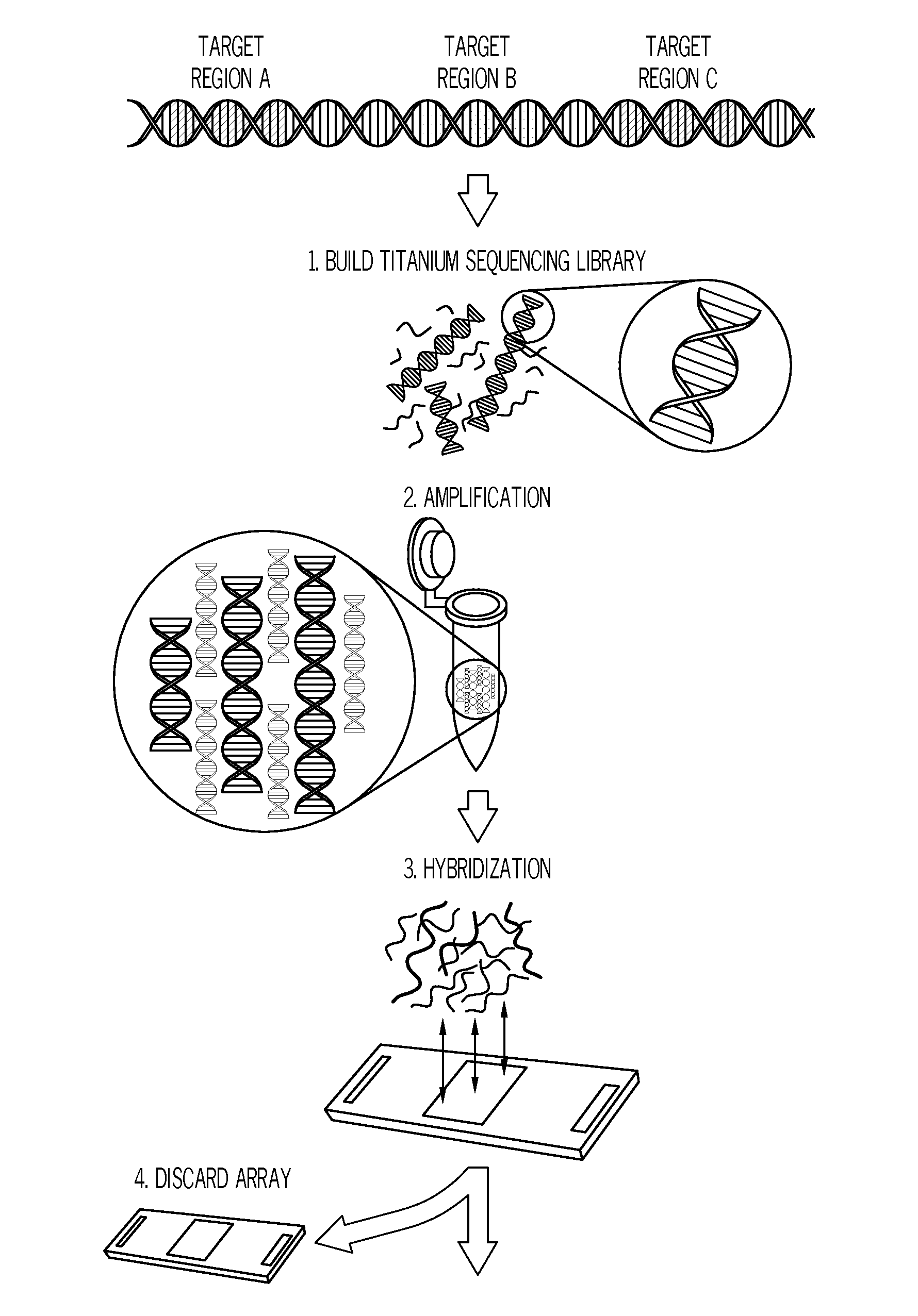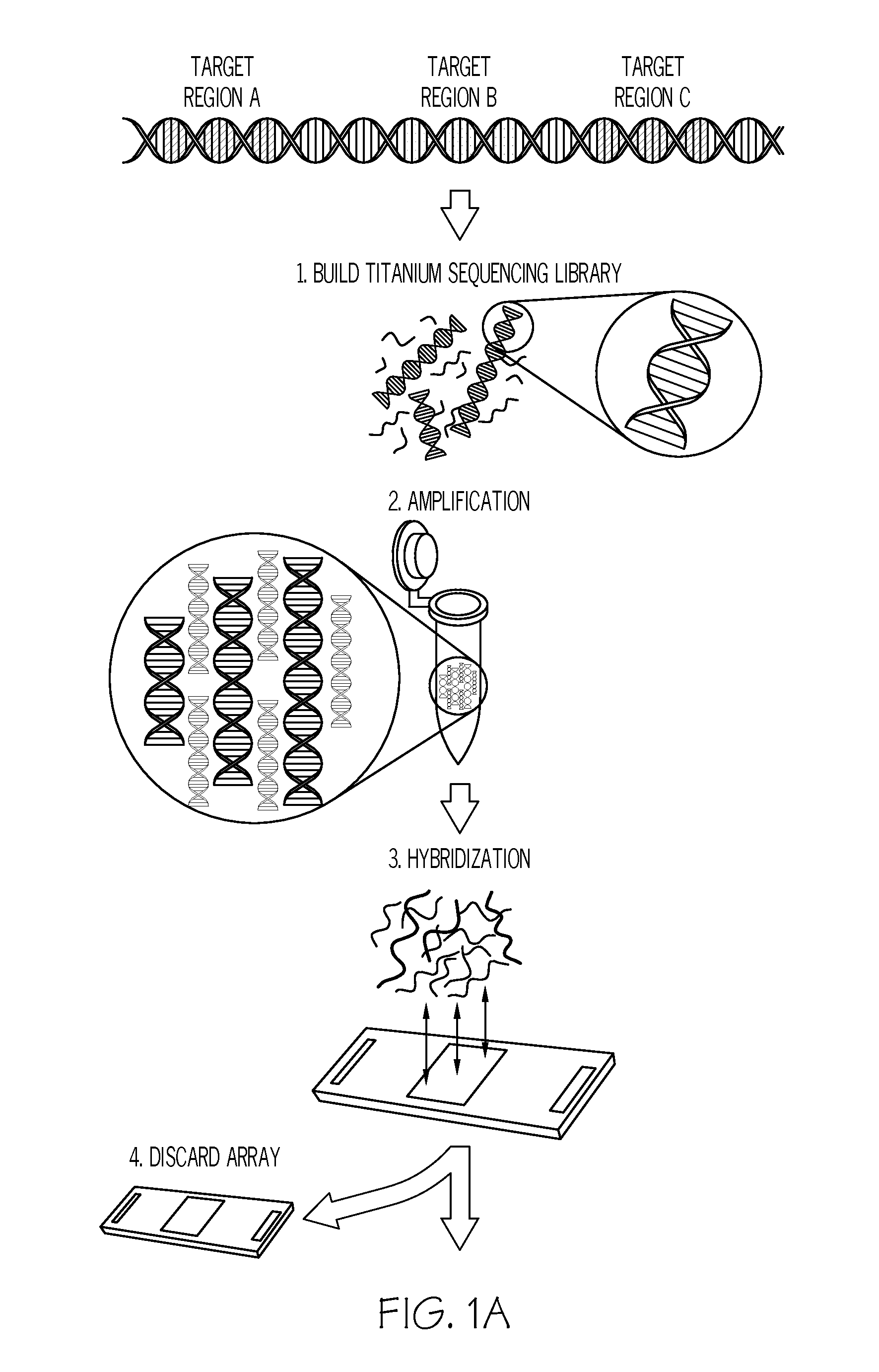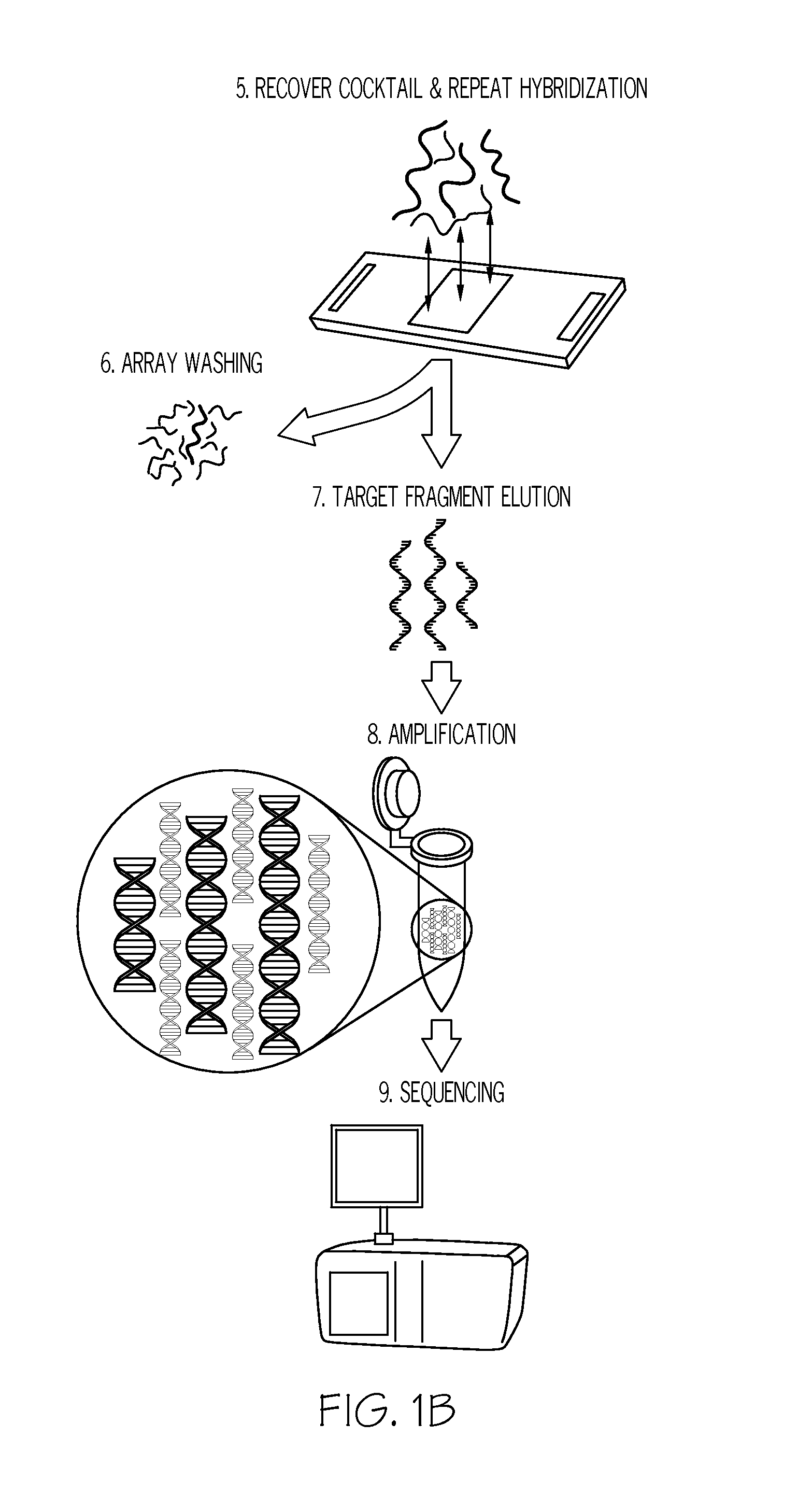Methods and systems for enrichment of target genomic sequences
a technology of target genomic sequences and enrichment methods, applied in the field of methods and systems for targeting genomic sequence enrichment, can solve the problems of reducing the efficiency of capturing target nucleic acids, and achieve the effect of reducing the genetic complexity of a plurality of nucleic acid molecules and increasing the efficiency of target enrichmen
- Summary
- Abstract
- Description
- Claims
- Application Information
AI Technical Summary
Benefits of technology
Problems solved by technology
Method used
Image
Examples
example 1
Array-Based Repeat Subtraction-Mediated Sequence Capture (RSSC) for Maize
Repeat Array Design
[0093]A custom 720K NimbleGen microarray (081110—Zea—mays_repeats_cap) was synthesized three times per slide to contain maize repetitive elements in the MAGI Cereal Repeat Database (v3.1; http: / / magi.plantgenomics.iastate.edu / repeatdb.html) and the TIGR Maize Repeat Database (v4; http: / / maize.jcvi.org / repeat_db.shtml). The design may be ordered by request. There are 2.1M total probes on the array. Only the center subarray containing 720K probes was utilized in this study.
Maize NimbleGen Capture Array Design
[0094]A large genomic region on a BAC fingerprint contig (FPC Ctg138, chr 3) was originally selected for targeting. Based on the physical map released prior to May 29, 2008, a total of 70 sequenced BACs are within this FPC contig and their sequences were downloaded from GenBank on May 29, 2008. The physical map has been updated to the latest release (Maize golden path AGP v1, Release 4a.53)...
example 2
Solution-Based Repeat Subtraction-Mediated Sequence Capture (RSSC) for Maize
Repeat Subtraction Array
[0104]A custom NimbleGen 3×720K sequence Capture microarray was synthesized to contain maize repetitive elements in the MAGI Cereal Repeat Database (v3.1; http: / / magi.plantgenomics.iastate.edu / repeatdb.html) and the Maize Repeat Database (v 4; http: / / maize.jcvi.org / repeat_db.shtml). Each probe contained 15mer sequence on both the 5 and 3 prime end to facilitate amplification with Insitu primers. There are 2.1M total probes on the array, though only the center subarray containing the 720K probes was utilized.
Maize NimbleGen Sequence Capture Array Design
[0105]The array design was the same as in example 1.
Maize Sequence Capture Library
[0106]DNA was isolated from 14-day-old seedlings of inbred line B73 using reported protocol (Li et al. 2007). A 700 bp average insert size 454 GS FLX-Titanium sequencing library was generated and subjected to 8 cycles of amplification using primers based up...
example 3
Solution-Based Repeat Subtraction-Mediated Sequence Capture (RSSC) for Canola
Repeat Subtraction Array
[0109]Complete BAC sequences from Brassica rapa subsp pekinensis were downloaded from GenBank in April 2009. A total of 970 BAC sequences were collected, representing 125.4 Mbp of the Brassica genome. The RepeatScout application suite (v1.0.5) was used to define a set of repeat sequences. Briefly, the build_Imer_table application was used to build a table of frequencies, using the default settings for the application. Then the RepeatScout application, with the frequency table, was used to create a set of 12316 repeat sequences, totaling 10.2 Mbp. The repeat sequences ranged in size from 50 by to 15670 bp, with an average size of 829 by and a median size of 236 bp. Sequence capture probes were then generated for these repeat sequences by tiling. Additional probes were generated by tiling through 117 Mbp of whole genome shotgun (WGS) sequencing reads from canola. A 13-mer frequency his...
PUM
| Property | Measurement | Unit |
|---|---|---|
| Tm | aaaaa | aaaaa |
| thermal melting point | aaaaa | aaaaa |
| pH | aaaaa | aaaaa |
Abstract
Description
Claims
Application Information
 Login to View More
Login to View More - R&D
- Intellectual Property
- Life Sciences
- Materials
- Tech Scout
- Unparalleled Data Quality
- Higher Quality Content
- 60% Fewer Hallucinations
Browse by: Latest US Patents, China's latest patents, Technical Efficacy Thesaurus, Application Domain, Technology Topic, Popular Technical Reports.
© 2025 PatSnap. All rights reserved.Legal|Privacy policy|Modern Slavery Act Transparency Statement|Sitemap|About US| Contact US: help@patsnap.com



